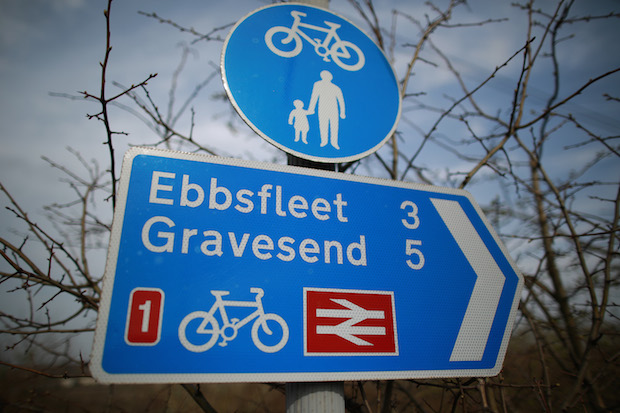The Wolfson Economics Prize has unveiled its shortlist today of plans for a new garden city that is both economically viable and popular. There are five shortlisted entrants, listed below, which will develop their plans for a new settlement between now and August. The winner will receive a £250,000 prize, while all finalists have £10,000 to develop their ideas further.
- Barton Willmore, led by James Gross. Barton Willmore is the UK’s largest independent planning led town-planning and design consultancy. Barton Willmore’s entry sets out a ten-point plan for the delivery of a new garden city, arguing for the development of a cross-party consensus and the production of a National Spatial Plan to identify suitable locations for new garden cities. Garden City Mayors, heading up Garden City Commissions, would be appointed to champion garden cities and find specific locations for development.
- Chris Blundell FRICS FCIH, Director of Development & Regeneration at Golding Homes. Chris is a development professional with over 30 years’ experience and has entered in a personal capacity with the support of Golding Homes. His entry argues that a garden city should accommodate between 30,000 and 40,000 people (about the size of Letchworth) and that its delivery should be led by Garden City Development Corporations.
- David Rudlin of URBED, with Nicholas Falk (also URBED) and input from Jon Rowland (John Rowland Urban Design), Joe Ravetz (Manchester University) and Peter Redman (Managing Director, Policy and Research at TradeRisks Ltd). URBED is an urban design and research practice. David’s entry argues for the near-doubling of an existing large town in line with garden city principles, to provide new housing for 150,000 people (about the size of Oxford or Canterbury). The entry offers a proof of this ‘urban extension’ concept based on a fictional town called Uxcester.
- Shelter, the leading housing and homelessness charity, led by their Head of Policy, Toby Lloyd. This entry proposes a new garden city on the Hoo Peninsula (Medway, Kent) commencing with a settlement of up to 48,000 people (about the size of Welwyn Garden City) at Stoke Harbour as part of a larger cluster of settlements eventually totaling 150,000 people.) The entry proposes a model designed to attract massive private investment into the provision of high quality homes, jobs, services and infrastructure. The delivery model prioritises speed and volume over profit margins, aims to acquire land at low cost and transfer valuable assets to a Community Trust for the long term. Local people would be offered unique opportunities to invest in the city, including through buying shares.
- Wei Yang & Partners in collaboration with Buro Happold Consulting Engineers, led by Pat Willoughby. Wei Yang & Partners is a London-based practice with an international portfolio of master planning, town planning, urban design and architectural projects. Dr Yang is also advising the Chinese Ministry of Housing and Urban-Rural Development on its urbanization programme. Their entry argues that an ‘arc’ beyond the London Green Belt (stretching from Portsmouth to Oxford to Cambridge to Felixstowe) is the best location for the development of new garden cities; and that the Government should publish a New Garden Cities Strategy identifying broad ‘areas of search’ for suitable locations, with a 30 year timescale.
One of the striking things about all the entries and indeed the aim of the prize itself is the attention each has paid to gaining consent for the new development, not just from local people who would be directly affected by a new city, but also those who generally regard new housing development as a bad thing. The polling – set out yesterday on Coffee House – shows that garden cities as a concept are popular: 74 per cent of voters think it is a good idea to build new garden cities, and the support rises among older voters, with 79 per cent of over-65s agreeing that it is a good idea to build new garden cities. This is perhaps because voters see garden cities as a way of concentrating new development away from their back yards: 70 per cent of those polled agreed that building garden cities would be a better way of delivering new housing than the current method.
The question is, though, whether voters in an area feel rather less positive when it is named as the site for a garden city. And this is what the Wolfson entrants are trying to tackle, although only one of those shortlisted, Shelter, as specified a location for its garden city on the Hoo Peninsula. If they do manage to come up with a genuinely popular new garden city, they will go some way to cracking a long-term problem in politics and planning, which is that people no longer feel comfortable about new housing in their areas. This is because successive governments have taken the goodwill of the British people for granted for too long, imposing developments that were unattractive and in some cases unnecessary on communities without consent or local demand. They created Nimbys, and if the Wolfson prize wants an even bigger legacy than one garden city for tens of thousands of people, then it could be the unravelling of that hostility and powerlessness that many people feel as a result of our messy planning system.
P.S. As for what the Queen’s Speech has to say about garden cities, which politicians like to say they love, even if they then panic about locations, this is what the monarch’s address contained:
‘My government will increase housing supply and home ownership by reforming the planning system, enabling new locally-led garden cities and supporting small house-building firms.’
What this means is legislation enabling that Ebbsfleet garden city announced in the Budget, the already-published Locally-led Garden Cities prospectus and ‘two further programmes to provide infrastructure support for large-scale locally-supported schemes’.







Comments